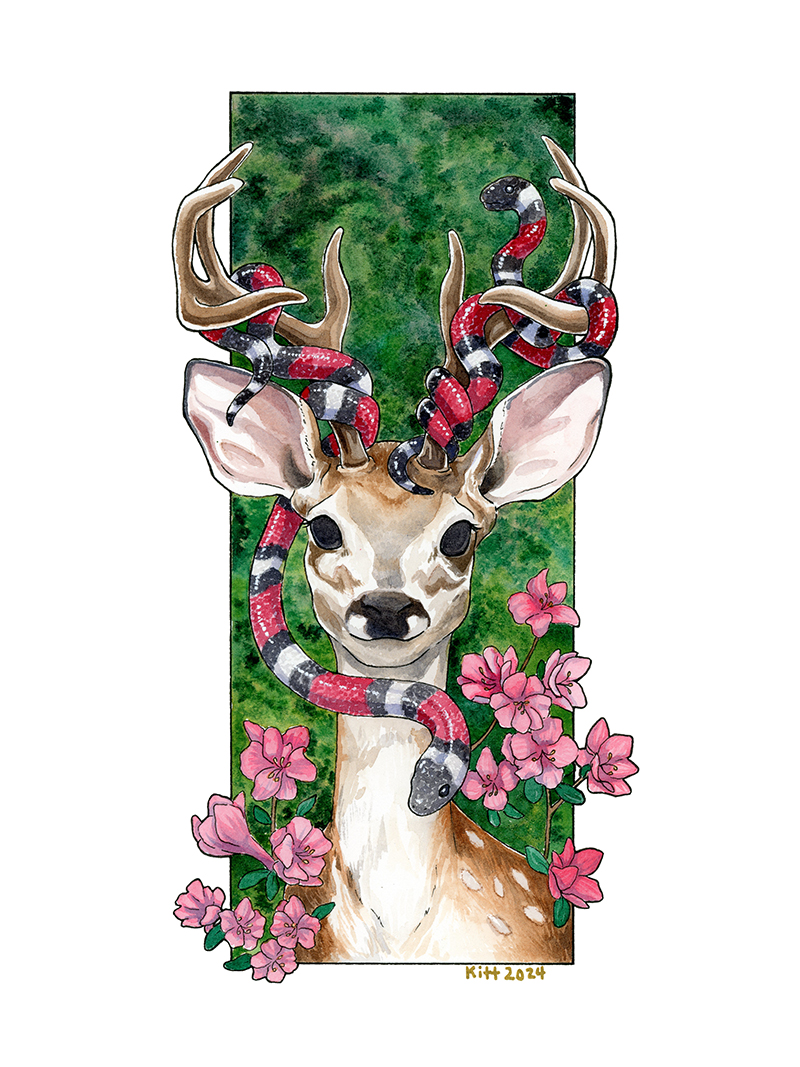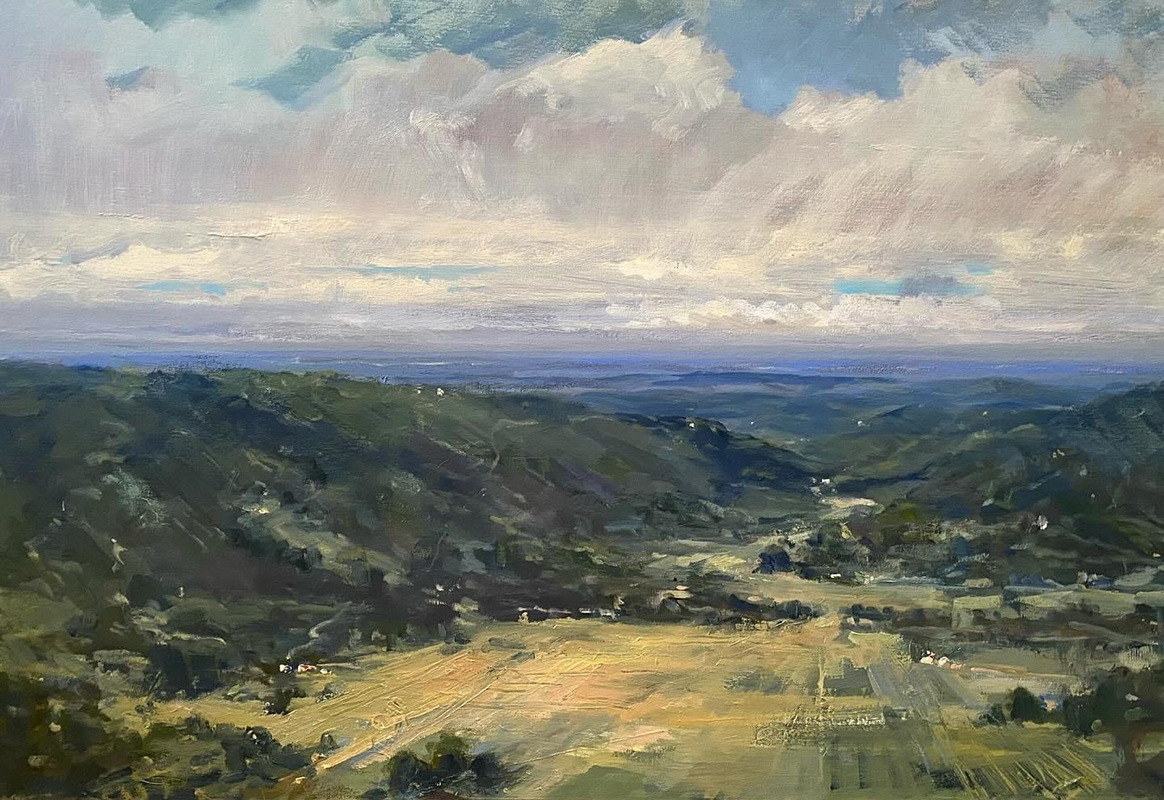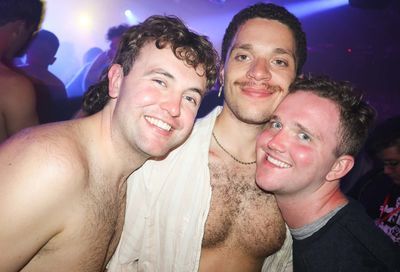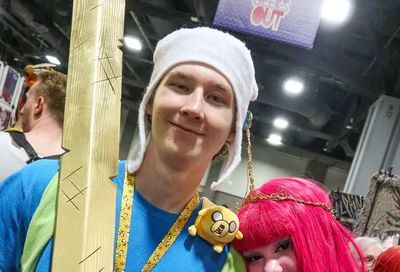Nicolas Party drapes the Hirshhorn in a must-see monumental painting
Party's artwork, formed from 100 individual pieces, helps put history in revealing context

“I identify as a heterosexual in my daily life,” Nicolas Party says. “In my practice, it may be different.”
The 31-year-old New York-based artist, originally from Switzerland, is known for his practice in pastels, creating colorful paintings, murals, sculptures, and installations typically featuring ambiguous or androgynous figures rendered in slightly unconventional and exaggerated ways. That’s certainly the case with his latest — and, perhaps, greatest — installation at the Hirshhorn Museum.
“It was a very particular kind of request,” he says. “A commission to work on a screen that covers the scaffolding of a building. I never had that and probably will never have that again. Or maybe I’m going to become known as the Screen Guy.”
You certainly can’t miss the Screen Guy’s “Draw the Curtain,” a monumental outdoor installation that rises four stories high and spans the circumference of the famously cylindrical Smithsonian museum of modern art. Party describes the installation as “a visual play on what is happening on the site” itself.

“They’re physically doing this big [exterior] construction, and they want to hide it in a way with an actual curtain, a synthetic fabric that has been printed on,” says the artist.
Created digitally as a collage, the finished work encompasses over 100 pieces of industrial scrim stitched together and installed by a team of construction workers. The wraparound mural depicts a series of faces, partially peering out from curtains, that Party sampled from classic paintings. “Those anonymous-type heads,” he says, “you don’t really know who they are. They don’t really belong in any very specific social group or age or gender. They’re kind of looking at you, they’re also looking behind you, they look maybe at the city and what’s happening in this city — hiding and revealing what’s happening here.”
Such “gender ambiguous” characters have been a signature of Party’s work for years. “When I started to use soft pastels,” he says, “the first thing that I did in the portraits was to [add] makeup on the eyelashes and lipstick. And it just came very naturally.”
Only much later did he realize that his approach represented a subtle hat tip to “the history of the medium, [which] is really tied up with makeup and gender.” Pastel flourished during the late-Baroque Rococo era in Europe throughout much of the 1700s, when it wasn’t unusual for men as well as women to don makeup and wigs. At the time, several women became prominent, successful artists — including Rosalba Carriera, Marie-Suzanne Giroust, and Adélaïde Labille-Guiard — despite the era’s general dearth of academic and career opportunities for females. This was in part “because pastels were little sticks that you can have at home.”
Until they fell out of favor, that is, along with Rococo, with the French Revolution and 19th-century demands for “big historic paintings, with big masculine figures in very traditional ways.” Pastels were “dismissed as something completely frivolous and superficial and not serious,” Party says.
“And that’s something that was completely forgotten,” he continues, alluding to another source of inspiration for the Hirshhorn installation. “Still, to this day, actually, nobody really knows that there were a lot of women artists.”
Nicolas Party’s “Draw The Curtain” will remain up and visible through Spring of 2022. The Hirshhorn Museum is at Independence Avenue and Seventh Street SW. Call 202-633-1000 or visit www.hirshhorn.si.edu.
Read More:
October highlights at The Birchmere
DeAngelo Jackson blazes a trail from gay adult films into mainstream acting on ‘Collar Confessions’
Support Metro Weekly’s Journalism
These are challenging times for news organizations. And yet it’s crucial we stay active and provide vital resources and information to both our local readers and the world. So won’t you please take a moment and consider supporting Metro Weekly with a membership? For as little as $5 a month, you can help ensure Metro Weekly magazine and MetroWeekly.com remain free, viable resources as we provide the best, most diverse, culturally-resonant LGBTQ coverage in both the D.C. region and around the world. Memberships come with exclusive perks and discounts, your own personal digital delivery of each week’s magazine (and an archive), access to our Member's Lounge when it launches this fall, and exclusive members-only items like Metro Weekly Membership Mugs and Tote Bags! Check out all our membership levels here and please join us today!
























You must be logged in to post a comment.